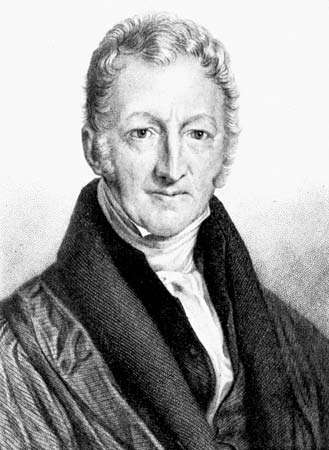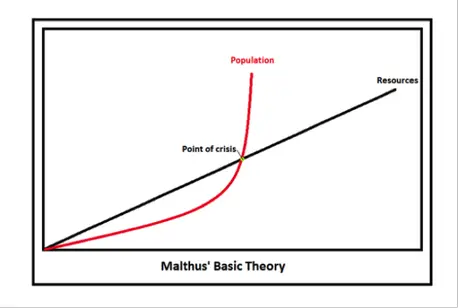Thomas Robert Malthus, an English scholar, and researcher had distributed this hypothesis in his 1798, An Essay on the Principle of Population. The Malthusian Theory of Population is a hypothesis of exponential population development and also the arithmetic of food supply development.
He had a belief that through preventive and positive checks, the population can be controlled to have an equal food supply with the population level.

How the Malthusian Theory Works
1. Population and Food Supply
Thomas Malthus had theorized that the population developed in geometrical movement. The geometric movement is an arrangement of numbers where each and every term after the first is found by increasing the past one by a fixed, non-zero number called the basic proportion.
Also, he expressed that the food supply increases in an arithmetic movement. The arithmetic movement is a grouping of numbers with the end goal that the contrast between the sequential terms is consistent. For instance, an arrangement 2, 5, 8, 11, 14, 17, the common difference between the numbers is 3. He inferred this end because of the Law of Diminishing Returns.
Henceforth this means that the population will grow much faster than the food supply and the population will continue to have scarce food.

2. Populace Control
He further argued that in light of the fact that there will be a higher population than the accessibility to food, several people will die because of the shortage of food. He suggested that if the Positive Checks (or Natural Checks) and Preventative Checks he will provide, then one can save the lives of the people and let them die out of hunger. These checks would prompt the Malthusian calamity, which would take the populace level back to ‘sustainable level’.
- Positive Checks or Natural Checks
He believed that natural forces can address the unevenness between food supply and populace development if there are natural disasters. For example, floods or earthquakes or any man-made disaster could lead to less population, thus the population gets reduced and there is a balance between the population and the food supply.
- Precaution Checks
Malthus additionally proposed utilizing precaution measures to control the development of the population. These measures are proper family planning, late marriages, and celibacy.
Criticisms of Malthus’s Theory
- Populace Growth
The natural disasters or man-made disaster that Malthus was looking forward to did not occur. In Western Europe, the population has developed (not at the rate Malthus anticipated) and for technology growth, there has been developed food supply.
- Production of Food
For technological development, there has a significant expansion of food supply. It has been noted that food production growth has been much more compared to population development. For instance, amid the 1930s in the US, 25% of the population worked in the rural division while the all-out GDP was under $100 billion to the GDP. Today, less than 2% of the populace works in the rural division while the all-out GDP is over $14 trillion.
- Worldwide Trade
Malthus’ study on food production was mostly based on the availability of the land. However today for globalization we can export and import food and services all over the world. Hence a country can receive food from all over the world and there will be no scarcity of it.
- No Calculations
Malthus did not provide any kind of calculation for his theory on geometric theory or arithmetic theory. Thus the experts concluded that the growth rates are not reliable enough for his predictions.